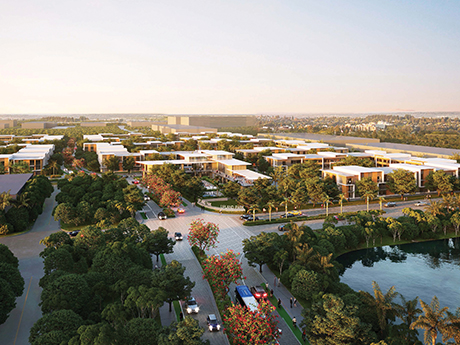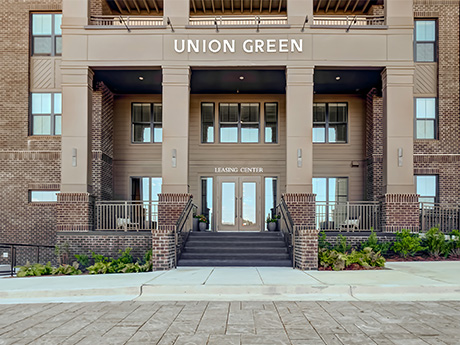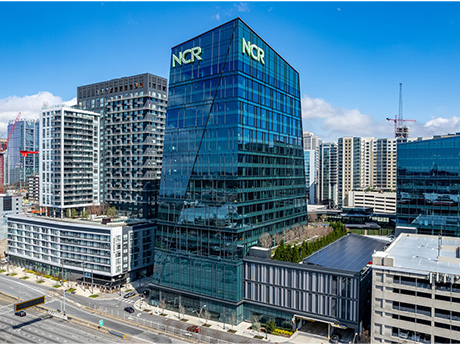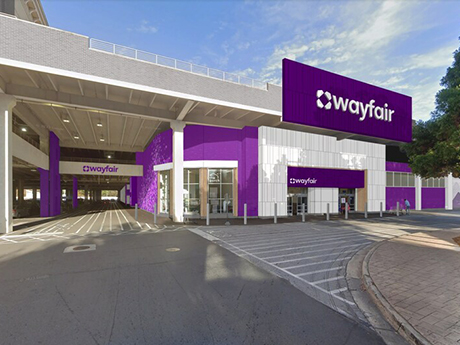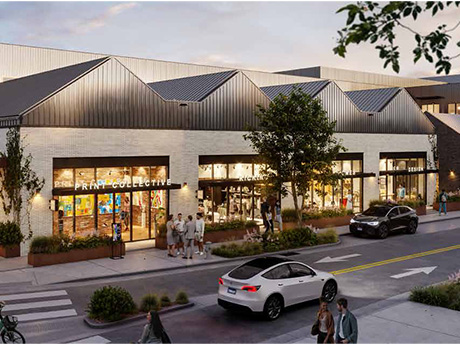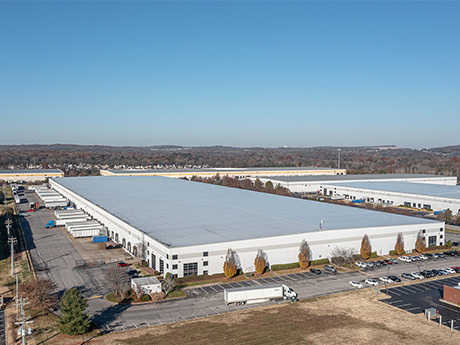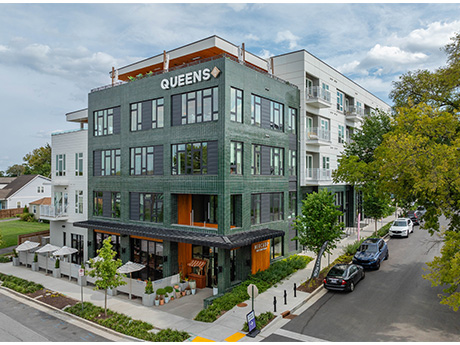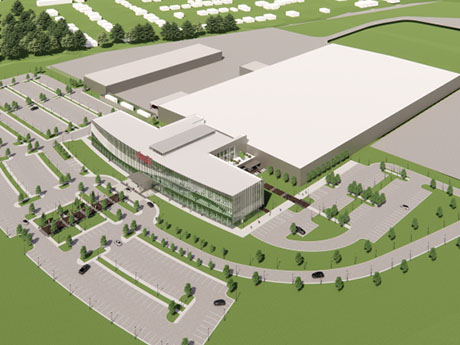South Florida remains one of the most attractive markets for multifamily investment in the United States, driven by population growth, job creation and limited rental supply. While 2024 saw slower transaction volumes, fundamentals suggest a rebound is coming in 2025. This article explores trends in investment sales, debt capital markets and joint venture (JV) equity, highlighting how strategic structuring and strong relationships are driving activity in today’s selective capital environment. Poised for sales growth Miami’s multifamily market continues to thrive, fueled by population growth, high rental demand and major developments. The city’s job market, with an unemployment rate of just 2.4 percent, is expected to grow by over 18,000 positions in 2025. Corporate expansions — like Citadel, MSC Group, Nvidia, Microsoft and Shopify — have driven demand for luxury rentals, while vacancy rates remain under 5 percent. With home prices rising over 70 percent in the past five years and mortgage rates more than doubling, homeownership is out of reach for many. As a result, demand for luxury rentals remains strong, especially in suburban areas where transit-oriented developments are emerging. One standout is Terra’s $1 billion Upland Park in West Miami-Dade County. In partnership with the county, the project includes …
Southeast Market Reports
Five years after the world shut down, the national multifamily market is still on a roller coaster ride. After the highs of 2021 quickly turned into the lows of 2023, the dust settled in 2024. Today, the market has begun to reactivate while continuing to grapple with the aftereffects of the run-up. While national multifamily transactions soared 22 percent in 2024, Atlanta transaction volume was flat year-over-year as the investment community shifted a favorable view of Atlanta toward ambivalence. Perceptions surrounding new supply and non-paying tenants contributed to the city falling out of vogue with some investors, but Atlanta is a resilient market. With new deliveries having peaked in 2024 and property-level fundamentals rapidly turning the corner, Atlanta may be beaten up, but the light at the end of the tunnel is coming into focus: Atlanta is still a long-term winner. Days of peak supply are over While Atlanta experienced a record 24,000 units delivered in 2024, that figure represents just 4 percent of its total inventory. When compared to other Sun Belt markets like Charlotte (10 percent of total inventory delivered in 2024), Nashville (8 percent) and Dallas (5 percent), the number doesn’t seem as jarring. Looking ahead to …
Tenants are battling it out for Atlanta’s top-tier office space as trophy availability tightens and new office construction draws to a halt. With no end to the flight-to-quality trend in sight, Class B assets accounted for a whopping 70 percent of the market’s overall negative absorption (-736,682 square feet total net) in the first quarter of 2025, while Trophy assets recorded positive absorption (+114,579 square feet). Furthermore, office buildings that delivered between 2016 and 2021, which amount to almost 14 million square feet of space, currently average 92 percent occupancy. This underscores the growing divide between the haves and have-nots in Atlanta’s office market. Premium space in demand As office leasing activity reaches its highest level since 2019, decision-makers face a rapidly evolving landscape where securing the right space requires a highly motivated and strategic approach. With rising attendance mandates, workforce expansion and a limited supply of premium office space, competition for the best locations is intensifying. In Atlanta, submarkets like Midtown and Central Perimeter continue to outperform. Mini submarkets surrounding mixed-use districts like Avalon and The Battery (i.e. “urban-edge” in the suburbs) are also in high demand among tenants craving walkability and upscale amenities in the metro’s most sought-after …
The last four quarters in the Atlanta industrial market were something akin to a good old-fashioned roller coaster ride at the historic Southeastern Fairgrounds! The absorption, activity and new construction sectors all went for a somewhat bumpy ride this past year. What’s happening? First, the quarterly absorption numbers for the Atlanta industrial market have been anything but steady. Eight quarters ago there was 7.9 million square feet of positive net absorption, followed by five negative quarters in a row (totaling 13.2 million square feet), then came two positive quarters (totaling 7 million square feet) and then back down to 2.8 million square feet of negative net absorption for the first quarter of 2025. The annual absorption numbers were up and down as well. The last four quarters yielded 2.2 million square feet of positive net absorption, but a year ago, at this same time, the absorption numbers plummeted down to a negative 11.3 million square feet. Two years ago, the industrial market experienced 32.5 million square feet of positive net absorption. Second, the activity numbers also were up and down. The second quarter of 2024 recorded 14.4 million square feet of activity, but that number dropped to 13.6 million …
Atlanta’s retail market is proving it knows how to adapt, evolve and outperform, even in the face of macroeconomic headwinds. Despite a moderation in leasing and investment sales activity in recent quarters, the city’s fundamentals remain strong. Vacancy rates are at historic lows, rent growth is outpacing the national average and population and income growth continue to fuel long-term demand. Demand and demographics With vacancy rates consistently under 4 percent, Atlanta remains one of the tightest retail markets in the country. The appetite for well-located retail space hasn’t waned, even as broader economic uncertainty has slowed transaction velocity. In fact, strong absorption numbers and a limited supply pipeline have bolstered landlord confidence and pricing power across the metro. What’s driving this resilience? A booming population, rising household incomes and a steady influx of corporate relocations. Employers like Microsoft, Google and Cisco are expanding their footprints, bringing with them jobs, workers and spending power. Some of this growth has been particularly noticeable in Midtown. Redevelopment playbook Instead of ground-up development, Atlanta’s growth strategy has increasingly focused on reinventing aging retail centers in prime locations. With construction costs high and land increasingly scarce, developers opt to reimagine what already exists. These projects …
Nashville’s office market is navigating a transformative period as the city evolves into a national powerhouse for commerce, culture and corporate investment. Fueled by continued population growth, economic diversification and a wave of new developments, Nashville remains an attractive and resilient market despite headwinds in the broader commercial real estate landscape. Economic trends Nashville’s economic landscape continues to shift in ways that support long-term office market vitality. Population growth: One of the fastest-growing cities in the United States, Nashville continues to benefit from a steady influx of new residents. The expanding talent pool is a major driver of office demand as companies look to establish or expand their footprint in a market rich in skilled labor and cultural vibrancy. Diversifying economy: While music and healthcare have long been economic cornerstones, the city is now seeing strong momentum in sectors like technology, finance, professional services and logistics. These industries bring high-paying jobs and are increasingly seeking high-quality office space that reflects their evolving workplace needs. Return-to-office strategies: Like many U.S. markets, Nashville has witnessed the rise of hybrid work models. However, rather than diminishing the importance of the office, this shift is redefining its role. Employers are focused on right-sizing their …
Nashville’s industrial real estate market closed 2024 with a clear message: this metro is a logistics juggernaut, blending robust demand, strategic location and a dynamic investment landscape. With a vacancy rate ticking up to 4.1 percent in the fourth quarter amid new supply, yet absorption exceeding 4.2 million square feet year-to-date, the market’s resilience stands out. Rents climbed to $9.94 per square foot, and industrial sales topped $1.4 billion — a 37 percent surge year-over-year. The takeaway is unmistakable for stakeholders: Nashville’s industrial sector thrives on its ability to absorb growth while signaling new opportunities for 2025. Economic engines Macro and local economic trends underpin this strength. Nationally, e-commerce sales hit $308.9 billion in fourth-quarter 2024, a 9.4 percent increase year-over-year, according to Commercial Edge. This uptick amplifies demand for warehouse and distribution space. Locally, Nashville’s job growth moderated to 0.9 percent in 2024, according to Oxford Economics, down from 3.2 percent in 2023. But industrial sectors shone in the report: manufacturing jobs grew 2.2 percent and trade, transportation and utilities grew by nearly 0.5 percent. The Nashville Area Chamber of Commerce reported that 79 percent of 2024 business relocations and expansions involved industrial users, promising 3,309 new jobs. With …
Nashville’s multifamily sector has faced headwinds stemming from a wave of new deliveries over the past few years, similar to other high-growth areas across the country. Across this market, stabilized occupancy is currently 350 basis points below historical norms. Average market rents have declined nearly 3 percent from their 2022 peak, and concessions are widespread across several submarkets. However, despite these challenges, optimism is building around the Nashville’s outlook over the coming years. Investors are actively seeking well-positioned assets, anticipating what many believe will be the next strong cycle for multifamily assets in this market. Over the past three years, Nashville’s multifamily market has absorbed approximately 28,000 units, compared to roughly 30,000 new deliveries — creating a near-term supply-demand imbalance that contributed to recent softness. Nevertheless, the outlook is shifting. Only 17,000 units are expected to deliver between 2025 and 2027, while demand is expected to exceed this new supply materially, creating strong tailwinds for rent growth. In 2024 alone there were over 11,000 units of net absorption. New starts are few and far between, mostly concentrated in suburban submarkets where developers can build cost-effective, attainable housing. Elevated construction costs and higher interest rates continue to constrain development, pointing to …
The Nashville retail market has firmly established itself as one of the strongest and most dynamic in the United States. From luxury national chains to local entrepreneurial storefronts, retailers are increasingly drawn to the city’s diverse and resilient economy — and for good reason. Over the past decade, Nashville has been one of the fastest-growing cities in the country, with consistent year-over-year population and employment gains. This trajectory has been fueled by a favorable business climate, highlighted by the absence of a state income tax, as well as local policies that encourage corporate investment and relocation. The results are tangible: global and domestic companies alike have planted deep roots in Middle Tennessee. Major players such as AllianceBernstein, Amazon, Nissan, Bridgestone, Asurion and Deloitte have relocated or expanded here, joining long-standing Nashville-based giants like HCA Healthcare and Tractor Supply Co., both of which continue to grow their local footprint. This economic expansion has powered steady demand in the retail real estate sector. In just the past year, a wave of retailers — including Whataburger, In-N-Out Burger and 7-Eleven — have entered the Nashville market, underscoring its appeal to both national and regional brands. These additions further diversify a landscape already shaped …
Birmingham’s office market is holding its own with overall market occupancy at 82.6 percent as of fourth-quarter 2024. We saw a slower second half of the year, but that is to be expected during a presidential election year when companies often hit pause on significant real estate decisions. During the fourth quarter, Birmingham’s multi-tenant office market recorded negative absorption of 67,739 square feet, but that was a notable improvement from the negative 268,061 square feet recorded the previous quarter. Leasing activity for the quarter came in at 180,849 square feet, bringing the year-to-date total to just over 562,000 square feet — about 22 percent below the previous year’s pace. While definitely a slowdown, this performance is nothing out of step with the broader national trends. Signs of positive momentum The good news? Since the start of 2025, activity has picked up across the board. Tenants are back in the market touring space and rethinking their long-term office needs. Some are expanding, some are rightsizing to space that better fits how they work today and others are updating their office protocols to bring employees back in more regularly — all of which is driving movement in the market. In addition, several …


